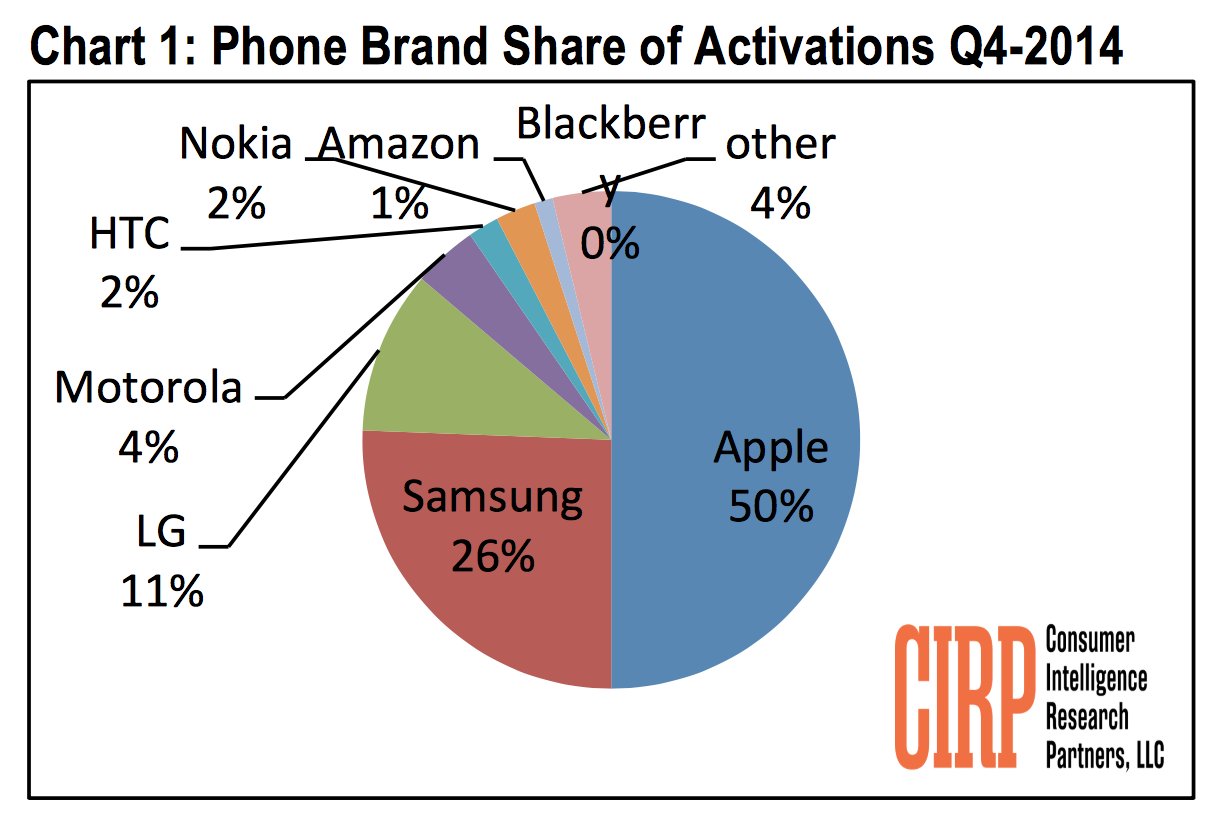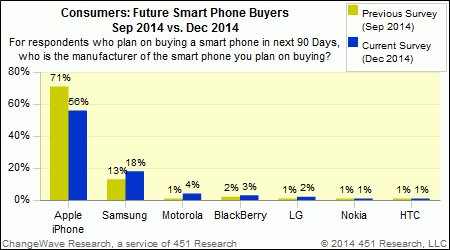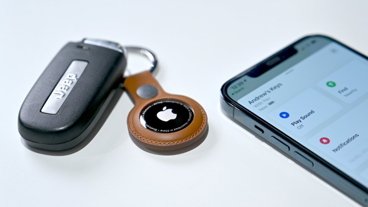Apple captured half of U.S. mobile phone activations in Q4, demand still at record high
Record sales of the iPhone 6 and 6 Plus propelled Apple to a dominant position in the U.S. smartphone market over the holidays and demand continues to reach record highs, twin reports issued Friday indicate.
One out of every two mobile phones activated in the U.S. from Oct. 1 to Dec. 31 were iPhones, according to a Consumer Intelligence Research Partners survey of 500 buyers. Second-place Samsung took 26 percent of the market, with fellow South Korean firm LG in third place at 11 percent.
Apple's share was up significantly from the 28 percent the company booked in the prior quarter. CIRP attributes the jump to consumers who were waiting for the iPhone 6 release before purchasing a new device, a pattern that has repeated itself throughout the iPhone's life.
Samsung, in comparison, dropped 5 percent sequentially. LG was up 8 percent in the same period.
"By every measure, Apple's 2014 phone launch was a success," CIRP cofounder Josh Lowitz said in a releae. "iPhones drew from loyal Apple customers, with 86% of buyers upgrading from an older iPhone. Samsung and LG saw far lower loyalty rates, with 25% of Samsung owners and 18% of LG owners who activated a phone in the quarter switching to an iPhone."
Those numbers look to continue, as some 56 percent of consumers who plan to purchase a smartphone in the next 90 days said they have their sights set on an iPhone. Market research firm 451 Research surveyed 4,126 "primarily North American respondents" to arrive at that conclusion.
That number is down from the 71 percent who planned to purchase prior to the iPhone 6's release, but still represents an enormous lead over Samsung, which comes in second with 18 percent purchase intent, itself a modest increase of 5 percent sequentially. It is the highest level of demand for an iPhone at this point in the product cycle since 451 began tracking, the firm said.
Apple's decision to increase the size of the iPhone's display looks to have played a role, with 60 percent of likely buyers saying they prefer a screen size over 5 inches.
 Sam Oliver
Sam Oliver












 William Gallagher
William Gallagher
 Andrew Orr
Andrew Orr
 Sponsored Content
Sponsored Content
 Malcolm Owen
Malcolm Owen



 Mike Wuerthele
Mike Wuerthele







